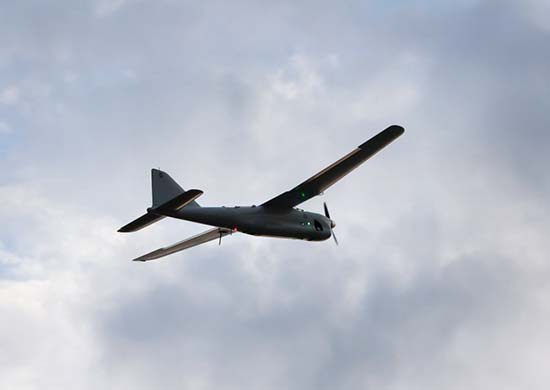Orlan-10
Summary
| Category | Military Drones |
| Origin country | 🇷🇺 Russia |
| Manufacturer | Special Technology Center |
| First flight | 1 January 2011 |
| Year introduced | 2011 |
| Number produced | 1000 units |
| Average unit price | $0.1 million |
Description
The Orlan-10 is a reconnaissance unmanned aerial vehicle developed by the Special Technology Center (STC) in Saint Petersburg for the Russian Armed Forces. Over 1,000 Orlan-10s had been produced by 2018, encompassing 11 different variations, and further orders for both Orlan-10s and 30s were placed in August 2022. Featuring a composite fuselage to reduce its radar signature, the Orlan-10 is typically deployed in groups of two or three, with roles divided between reconnaissance, electronic warfare, and data relay. One system can include up to five vehicles.
In 2020, a larger Orlan-30 version was introduced, offering a laser designator option to enhance the effectiveness of other precision weapons, following testing in 2019, and its export version was first presented in August 2023.
Power is provided by a Saito Manufacturing FA-62B single-cylinder four-stroke glow fuel piston engine, delivering 0.71 kW (0.95 hp). For imaging, the Orlan-10 incorporates a Canon EOS 750D/EOS 800D digital SLR camera, paired with an EF 85mm f/1.8 USM lens for optical capture, and a TM2005016-F19 Lynred PICO640gen2 infrared camera for thermal imaging. Orlan UAVs are operated by a mobile Ground Control Station (GCS), which can simultaneously manage up to four aerial vehicles. The connection is established through three radio signals: one for operator commands, one for transmitting imagery, and the use of GLONASS, with the potential to also use Galileo and Beidou, for navigation. Reconnaissance operations typically occur at altitudes of 1,000 to 1,500 meters.
The Orlan-10 possesses a 6 kg (13 lb) payload capacity, accommodating a variety of equipment depending on the mission requirements. While primarily a reconnaissance platform, an upgraded strike version has been reported, capable of carrying four high-explosive fragmentation projectiles. The Orlan-30 version has a laser designator option.
The Orlan-10 has seen extensive operational use across various theaters. It has been reportedly used in the Russo-Ukrainian War since 2014, with numerous reports of Ukrainian forces shooting down or capturing these UAVs. In 2022, reports emerged of an upgraded strike version being deployed during the Russian invasion of Ukraine. The drone is also actively used by the Russian Ground Forces in the Syrian Civil War for reconnaissance, aerial imagery, and 3D-mapping, notably assisting in the recovery of a surviving pilot from a downed Su-24M2 bomber in 2015. Beyond these major conflicts, the Orlan-10 has appeared in other areas such as Libya, Nagorno-Karabakh, and Mali, where one was shot down by Islamic State militants. There have also been isolated incidents of Orlan-10 drones crashing or being found in countries like Belarus and Romania.
Main Variants:
-
Orlan-10: The baseline reconnaissance variant is used for visual observation, carrying optical and thermal imaging payloads.
-
Orlan-30: A larger version introduced in 2020, which includes a laser designator option to enhance the precision of other weapon systems.
-
Moskit: A version specialized for electronic warfare (EW) tasks.
-
Strike Variant: An upgraded version of the Orlan-10, reportedly used in the 2022 Russian invasion of Ukraine, capable of carrying four high-explosive fragmentation projectiles.
Technical specifications
| Version: Orlan-10 | |
|---|---|
| Operational range | 110 km (68 mi) |
| Endurance | 16 hours |
| Maximum speed | 150 km/h (93 mph) |
| Wingspan | 3.1 m (10.2 ft) |
| Length | 2 m (6.6 ft) |
| Service ceiling | 5,000 m (16,404 ft) |
| Empty weight | 9 kg (20 lbs) |
| Max. takeoff weight | 16 kg (35 lbs) |
| Powerplant | 1 x four-stroke piston engine Saito Manufacturing FA-62B delivering None each |
All operators
